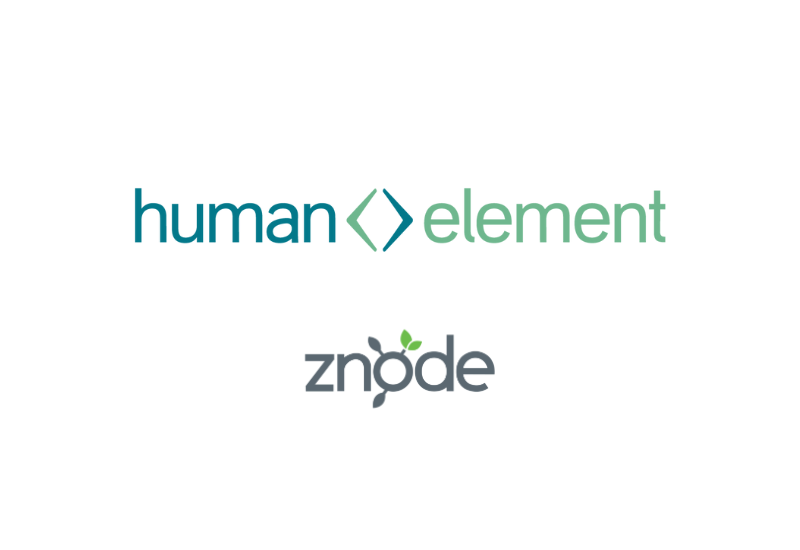
A group of Human Element humans traveled to Chicago last week for the EnvisionB2B Conference. Brought to you by Digital Commerce 360, the global leader in eCommerce research and media, EnvisionB2B is a highly valuable event for manufacturers, distributors, wholesalers, retailers and resellers. Here’s what a couple of our team members wanted to share about attending the event.
Popular strategies for extending the B2B eCommerce experience
Ryan Kroening, Senior Technical Project Manager
The conference was great from an informational standpoint. A lot of the ideas and concepts that were discussed are topics that we at Human Element assist our clients with every day.
To me, the overarching concept that everyone is working towards is:
How do we leverage technology to create a B2B transaction environment that’s simple, convenient, transparent, effective, while remaining data-driven for manufacturers, distributors, and merchants from both a buying and selling perspective?
Some key concepts/opportunities that I heard the most:
- Leveraging punchout catalogs is a desired feature for bigger customer accounts. It allows for an eCommerce buying experience while also seamlessly transacting within a merchant’s and customer’s ERP systems.
- Endless aisle – This definitely seems like an area of opportunity for B2B businesses. The idea is to bridge the gap between manufacturers and the end user as much as possible. Some manufacturers partner with their distributors and/or eCommerce agencies to build drop ship programs online which enable products to go directly from a manufacturing plant to the end user — as long as the plant’s operations allow for it.
- Data cleanup – A lot of businesses have data, but it’s not usable. A big thing all parties along the supply chain (manufacturers, distributors, etc.) experience is a point where they need to really dive into their data. They need to do the work to clean it up, standardize it, and get it to a point where they can make data-driven decisions and/or use that data to populate their different omni-channel touchpoints (marketing campaigns, ERP systems, eCommerce sites, etc.). There’s opportunity to grow in this space and get legacy companies to a point where they can operate in a more modern fashion that builds their data warehouse automatically as they sell and scale.
- Artificial Intelligence (AI) was discussed as an accelerant to getting a bigger presence online as well as a great tool to leverage opportunities. A great example is using AI to build and manage content. This can be a huge lift for folks that are spinning up or maintaining an eCommerce presence. If individual product data is at a good spot, we could feed that product data into AI to build out categories, attributes, attribute sets, and/or run an analysis on how SEO friendly the data is, or low-hanging fruit to make the data better.
B2B businesses thriving in eCommerce
Sabra Bander, Director of Account Management
Something that really resonated with me – and was a thread throughout the presentations and conversations – was the concept of “meeting the customer where they are.” Every business has different customer bases, with different personas with different motivations, frustrations, preferences, and needs. B2B businesses that are going to thrive in the eCommerce space need to have a really good grasp on their customers, and that was reinforced throughout the conference.
I like to ask people what brought them to the conference and what they were hoping to get out of it. A common theme at Envision B2B was that people were seeking validation that they are heading in the right direction with their eCommerce efforts in the B2B space. It seems as if the B2B companies that were represented at the conference are making efforts towards eCommerce, yet the space is still somewhat new for them, and building confidence within themselves, their teams and organization were important for them.
I am really intrigued by some of the new (to me) eCommerce platforms available for businesses to utilize. Historically, it has seemed like the options for eCommerce platforms were intended to encompass all aspects of an eCommerce operation, and the platform became a giant beast. I spoke with some people from Elastic Path and Optimizely and the intention seems to be more modular – focusing on the eCommerce and transactional aspect and making it very technically straightforward to utilize other tools that do what they do really well. I’m excited for the opportunity in the industry for Human Element and for our clients.
***
If you’d like to learn more about the content that was presented at the conference, you can visit the site here.



